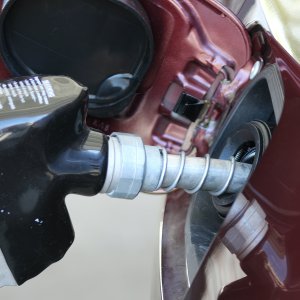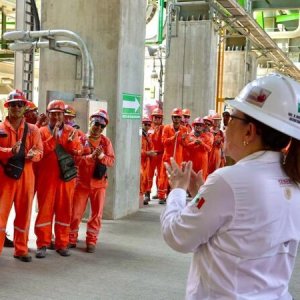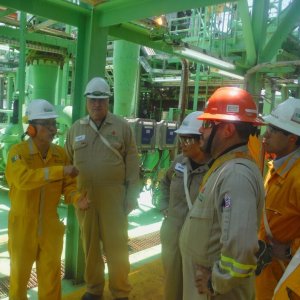Maintaining a Good Pace for Consolidation

STORY INLINE POST
Q: What is your assessment of PEMEX’s progress for its awarded areas in Round Zero? A: The main problem faced by PEMEX is its financial capacity to finance the development of the 489 direct E&P assignations it received during Round Zero. Even though for some blocks the technical plans for E&P were properly delivered to CNH within the three-year deadline, for many others the NOC requested two additional years to cope with the requirements. This meant some of these blocks reverted to migrations and farmouts to cope with these shortcomings in terms of deadlines. PEMEX is also clustering its farmouts into groups of five or more fields to make them attractive for potential partners. When it comes to contract migrations, these imply basically the same requirements as the farmouts, although certain parts of their process might be slightly more complicated. Overall, both experiences should help PEMEX to strengthen its assignation exploration and development capacity
Q: What main trends has CNH observed in contract assignation and farmout processes? A: CNH has been working with both schemes since we carry out the analysis for migrations for the Ministry of Energy and we do the licensing process for the farmouts, although the entire decision of carrying out a farmout falls on PEMEX, as it evaluates what it is looking for in a partner. There is an interesting relationship between the Ministries of Energy, Finance and Economy and PEMEX and CNH in that they provide advice on these processes but the ultimate player in setting the requirements is the market and its behavior, so market analyses and the study of awarded areas are key to successful licensing processes.
Q: Which market parameters are helping to attract a growing number of players to Mexico? A: The oil and gas industry works according to a longterm vision that can span 10 years, from the time a decision is made to when the actual exploration process begins. The first steps involve significant expenses to carry out exploration with no initial profits, making the first years hard for any company. We have seen several companies divest from exploration due to its expense and the length of time required to see financial returns. CNH addresssed this matter directly in the contracts, giving priority to exploration activities by incentivizing larger investments in this phase of the E&P contracts. This has been one of CNH’s major contributions to a sustainable E&P process.
We have also witnessed a similar trend in production as this implies immediate cashflow. We have stressed the need for optimized production processes by showing that it is not about the speed, but about efficiency. Now, operators present their production plans to CNH and we analyze what has occurred during the first three years after first oil and check if they are producing too quickly or if they are compromising vital aspects of the reservoir. Whenever this is the case, we require an explanation and a solution from their side. These long-term debates are the reason for CNH’s existence.
Q: How do transparency and coordination among regulators raise confidence among operators? A: The existing coordination between the Ministries of Energy, Finance and Economy and CRE, ASEA and CNH has worked well for the industry and its structure. Even though the Ministry of Energy selects the areas for bidding, it requests our technical opinion and we provide advice on what works best. Over time, the licensing rounds have grown in number of blocks awarded, their optimization, the awarding of agreements, the number of bidding companies and the amount of money offered above the previously stipulated royalty, which iindicates that we are moving in the right direction. Furthermore, there has also been a great level of openness from the regulators’ side to the opinions and feedback coming from the international market, particularly from the operators working in or interested in the Mexican oil and gas industry.
Q: What will be the implications of a unified licensing process for Rounds 3.2 and 3.3, particularly for their combined natural gas potential? A: I think natural gas has been seen with a reductive focus despite being the foremost source for the petrochemical industry and its productive chains. Natural gas also looms larger in global industrial transformation processes when compared to the oil industry, and the case of Mexico is an example of why we need to widen the focus on the natural gas industry. The country’s petrochemical imports are larger than its oil exports and we should have a policy to produce more gas to satisfy the local market and even think about exporting it.
We are about to launch a book on natural gas with 20 ideas on how to further develop this segment and proposals to overcome the limitations that the national system has imposed on itself in the form of tight regulations. When it comes to unconventional resources, there needs to be a great deal of information since people usually relate them only to hydraulic fracturing and this practice has negative connotations based on water usage and environmental impact. There is an opportunity to develop unconventional resources using the salinized water deposits in the north of the country and to reuse this water for all the fracking developments, as the processes do not require clean or potable water. We can take the example of the Permian basin’s highly productive fields in the US and apply this knowledge and experience to the potential in the Sabinas and Burgos basins.
Q: How will integrating the rules of the three regulators impact the industry? A: There is a strong will to develop a one-stop shop that integrates the requirements from the three regulators. Both CRE and ASEA have shown great willingness and we have held meetings to set the basis for this model, which would take around two years to reach completion. We need to make sure that this one-stop shop outlines each entity’s reach and that we do not have overlapping efforts. There is also an idea to create a digitalized hydrocarbons center, but this poses great challenges as it needs to be highly organized, rely on an organized digitalization engine and have data mining with focalized services according to the operators’ needs. It will take some time to compile but the first steps have been set in motion.
Q: What regulatory bottlenecks are slowing the reform’s implementation? A: We are in the middle of a process to simplify authorization procedures through the revision of all the steps and information required, which is more complicated than it looks. There needs to be coherence in the collected information and assurance that every single company will provide the exact same data. We also need to reduce the number of steps in the process and we expect to revise the most important ones by the end of 2018. As time goes by, more exploration and development plans will be presented and we will have to follow up on what companies are doing through visits and electronic updates.
Q: What message should the next federal administration send to further consolidate the industry? A: The first message is that the oil and gas industry is a long-term business and it requires enormously extensive productive chains that need to be safeguarded. The hydrocarbons industry is the driving force for different productive chains and by implementing it properly we can build local industries in different fields, such as materials. CNH has achieved its positioning as a fully transparent and a socially-auditable organism whereby any person can check its data. We have to ensure that this achievement remains untouched moving forward.
























